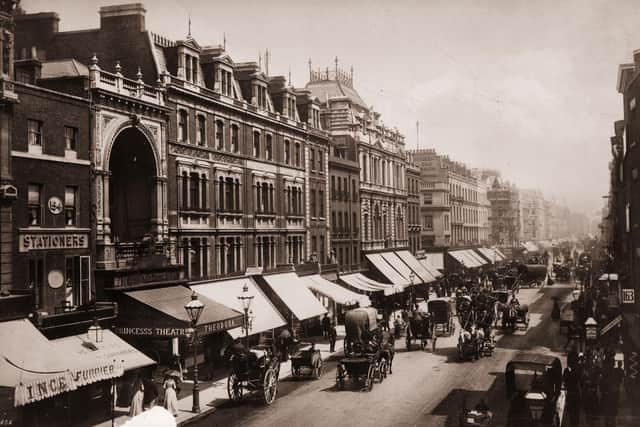Book review: Under Ground, by ES Thomson
Of the proliferation of sub-genres there is no end. In a way, this is no bad thing and testament to the vitality and glorious disregard for rules; and if time-travelling Jacobite romances don’t skirl your claymore, there are still other kinds of books available in bookshops. For the time being.
This is the seventh instalment in the Flockhart and Quartermain series, and although longevity and popularity are not indicators of merit on their own, well, if the customer keeps frequenting the costermonger, there must be something of value in his wares. It is set in the golden years of Victorian Britain, but suffused with 21st century concerns, sensitvities and wryness. In this respect, the works bear comparison with those of Jess Kidd, Jessie Burton, Jenni Fagan and “Ambrose Parry” otherwise known as Marisa Haetzman and husband Christopher Brookmyre. Thomson is something of a mystery in the world of mystery having previously written a debut, The Peach-grower’s Almanac and a second, Bleakly Hall, under the name Elaine DiRollo. I do wonder if the pseudonym is part of the game, in the manner of Walter Scott, or whether it belies a lingering anxiety about the respectability of genre-bending.
Advertisement
Hide AdIn this – chapter? Outing? Episode? – our apothecary sleuths are presented with a double dilemma. Can they rescue an innocent man from the gallows, and was the murder of heir to an estate actually part of a centuries old family curse?


Flockhart and Quartermain are called to a house of ill-repute owned by a previous “also featuring” cast member, the vulgar, no nonsense, curiously likeable Mrs Roseplucker. (I wish there were a word other than “Dickensian” as the humour is more like Smollett or Thackeray). The client has a look of moral terror and his throat has been slashed in a manner more akin to frenzied animal bites. Keen to keep the establishment’s reputation for discretion more than propriety, and with the law en route, she asks the pair for help. It turns out that the victim is the heir to Blackwater Hall, the home of the Mortmain family, who may have standing but are as morally dubious as Mrs Roseplucker in their own way. Family legend attests to a reprobate ancestor who laid down a curse that the first-born male would die a violent death, and a daemonic rat would be seen and involved. Another horror is as pressing and miasmic. Cholera has returned to London. Flockhart and Quartermain are further contracted by Mortmain Snr to find out who killed his louche son, on the condition that they report to him and not the law.
The plot is suitably Byzantine and as the crimes accumulate, “There may be more than one murder, or there may not. They may be related; they might be entirely separate occurrences, either way I think we are being toyed with, made to dance a merry jig by someone”.
And a merry jig it is. The rat is a clever choice of “freak of the week”, being, unlike Dracula or poltergeists, very real. It also has fine Victoriana and horror forms, from Winston in 1984 and Renfield in Stoker, up to The Talons of Weng Chiang, itself a homage to Arthur Conan Doyle’s referred-to-but-never-written story of the giant rat of Sumatra. They made memorable appearances in James Herbert’s The Rats (more disgusting then Stephen King, we were told at school) and Bret Ellis’s American Psycho.
This is a very olfactory novel. The handkerchiefs doused in jasmine, bergamot and lavender to ward off the smells of excrement, spoiled meat and factory chemicals; the scenes in the sewers; even the prototype coffee shop set up in the apothecary’s shop – all waft the epoch off the pages.
Under Ground has a double meaning. It refers to the subterranean cathedrals of Victorian sewers and an underground as a transgressive and permissive space. One can see the appeal of setting works dealing with these issues in the 19th century. The prejudice is real, but the ways of circumventing and eluding are ingenious. The form of the novel depends on clues, and lives of the characters are defined by decoding. There is always a danger of camp, of saying, “seriously, don’t take this seriously”. It may be “rollicking” and “rip-roaring”, but that does not make a novel about plague, poverty, peculation, pollution and hypocritical piety any the less serious. The stays are luxuriously described and are all stained; the brocade shimmers and is peeling.
Advertisement
Hide AdUnder Ground has a satisfying closure and enough balls in the air to make one eager for the next. The great and eccentric Sir John Urquhart subtitled his maddest book, “the gold discovered in a dunghill”. You don’t need to pore over the gardy-loo gubbins that makes up some of the subgenre to recognise this as gold.
Under Ground, by ES Thomson, Constable, £21.99.